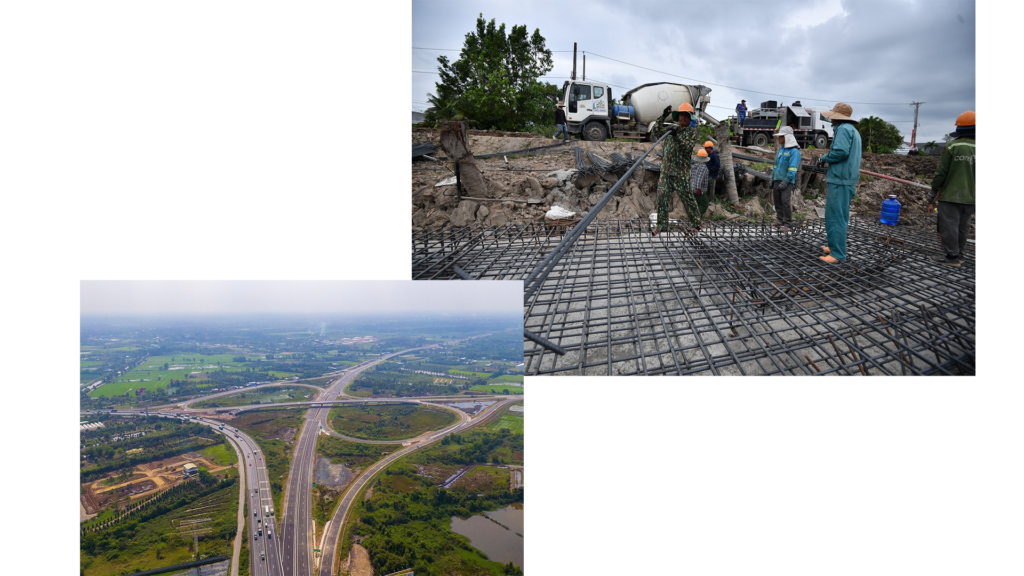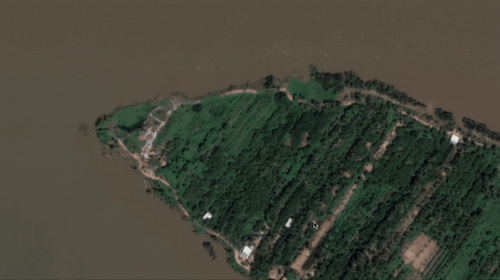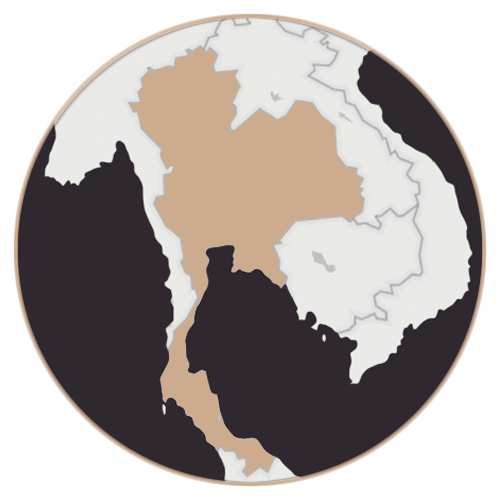By Le Dinh Tuyen, Pratch Rujivanarom,
Teng Yalirozy and Lay Sopheavotey
One October morning in Vietnam’s Dong Thap province, 72-year-old Nguyen Thi Cam sat on the banks of the Mekong River, staring at dredgers hoovering up sand in the distance.
“My house was over there before,” she said, pointing to a raft floating about 50 meters from the riverbank.
“After running away from erosion twice, the house is now located here,” she said of the old, dilapidated building by the river, where the shore was jagged and looked as if it could collapse at any time.
For more than a decade, sand mining had eaten away at the foundations of Cam’s old houses. A 25-hectare islet where she used to source corn and vegetables had disintegrated too.
The insatiable hunger for sand has intensified in the Mekong region – the home to Cambodia, Laos, Myanmar, Thailand and Vietnam – in the past decade due to urbanization and growing construction sectors that promise development in these countries.
Many expressways are planned or have been built, especially in Cambodia and Vietnam, where road networks are seen as the main source of investment. Infrastructure projects – ranging from airports and ports to railways – will likely be revived in the post-Covid-19 pandemic era for economic recovery.
The demand for real estate is strong in Thailand as the growing number of middle-class seek new houses and condominium units, while the sector remains one of the most profitable investment opportunities.

Sand is a vital raw material for the pursuit of this economic prosperity. However, some studies suggest that sand extraction in the region may surpass the sustainability threshold.
Originating on the Tibetan Plateau, the Mekong River is the major source of sand and gravel used in the region for construction in past decades.
The river is shared by six countries – China’s Yunan province, Cambodia, Myanmar, Laos, Thailand and Vietnam – most of which dredge sand from the river without any open data indicating the exact amount of extraction and a proper regional mechanism to regulate the sand mining.
“It is necessary to recognize sand as a strategic resource and strictly manage it through a strategic program, considering the impact on the whole delta and basin, not just in Vietnam but in the entire Mekong region,” said Marc Goichot, the Freshwater Lead at WWF Asia-Pacific.
A recent study – led by Christopher Hackney, a research fellow at the School of Geography, Politics and Sociology at Newcastle University – found that the volume of river sand extraction in Cambodia alone had doubled since the early 2010s.
His research team used monthly high-resolution satellite imagery to track sand barges and estimate volumes of sand extraction throughout the Mekong River in Cambodia. It showed the rate of sand extraction increased from 24 million tons in 2016 to 59 million tons in 2020 – surpassing the 2011 estimation of 50 million tons for the entire Mekong basin.
For Hackney, the volume of sand extraction is significant and may surpass what the river can naturally deliver, and cause impacts on the environmental systems and livelihoods the Mekong River supports.
This rapid loss of sand can cause environmental disasters in many ways, including riverbank erosion, changes in hydraulic flow, the loss of animal habitats and fish breeding grounds.
The transboundary impact is also of concern as excessive sand mining in upstream countries can cause sediment loss downstream, which reduces nutrition for the soil and increases the risk of saline intrusion at the estuary in Vietnam’s Mekong Delta.

According to the Mekong River Commission’s 2018 report, sand mining was one of the major culprits that contributed to sediment loss in the downstream river, along with hydropower dams. The sand mining sector was believed to be worth US$175 million annually.
“The industry isn’t regulated at the same level as oil and gas or the extractive industries, which are quite tight on monitoring and regulations of what’s done. Sand and aggregates are regulated more at the national level rather than at the international level,” said Hackney.
“Without robust and accurate reporting of extracted volumes, we will not really be able to address the environmental issues resulting from the removal of sand.”
Without the progressive development of a transboundary framework to regulate sand mining, each Mekong country dredges as much sand as it needs under its own regulatory system.
The health of the environment and the livelihoods of people in the Mekong countries depend on their governments – which are known for low levels of transparency and high levels of corruption.
In collaboration with the Environmental Reporting Collective, Mekong Eye has investigated the impact of sand mining in the Mekong River in Cambodia, Vietnam and Thailand, as well as examining the factors that drive excessive and illegal sand mining.

Despite the limited open data, domestic sand demand in Cambodia has unquestionably increased in the past decades due to a construction boom.
In many construction sites – from land reclamation areas in Phnom Penh and the under-construction new international airport to the Phnom Penh-Sihanoukville Expressway – trucks loaded with sand have been on the move non-stop.
According to an interview with Ung Dipola, the Director of Cambodia’s Mineral Resources Department, Cambodia consumed about 21 million and 16.5 million tons in 2021 and 2022 respectively.
Another six million tons was exported to Vietnam in the same period, mainly through the southern Kandal province which borders Vietnam’s Mekong Delta provinces and involves two companies ― one led by a tycoon family with ties to the Hun Sen government.
Cambodia had banned sand exports to other countries since 2017, but has now restarted the trade.

In a backdrop of sand barges busy in the Mekong River, local communities have lost land and houses to riverbank erosion suspected to have been caused by excessive sand mining that scoops up the sand from the riverbed and destabilizes the riverbank.
One of those affected by the riverbank collapse was Sor Sok Lang and her family of five, who lost their home and grocery business to the river in Kandal province.
Our reporters traced the lives of each family in the aftermath of the disaster and found it created a chain of events, especially for women and girls in the family, whose dreams of pursuing a higher education were washed away. Many now live impoverished lives.
In Vietnam’s southern Dong Thap province on Cambodia’s border, sand barges from Cambodia enter the port in Vietnam where buyers wait to get the sand to resell to local dealers.
The demand for sand in the Mekong Delta area has skyrocketed in recent years due to the construction of new infrastructure.

Vietnam’s Ministry of Transport reported that more than 43 million tons of sand would be needed for transport projects in the Mekong Delta in 2023 and 2024. But the area has encountered a shortage of sand – so local dealers rely on sand imported from Cambodia and illegal sand miners.
However, the sand operations are a mystery to local communities at risk of losing their homes and properties to widespread riverbank erosion.

The government’s data suggested that Mekong Delta provinces lost about 500 hectares of land each year to riverbank erosion. Between 2018 and 2022, erosion swept away nearly 2,500 houses in the provinces causing US$13 billion worth of losses.
The mining companies, although obtaining licenses from the government, don’t often publish information about the volume of their sand extraction, revenues and mitigation plans for potential environmental disasters.
Our reporter’s investigation found that some companies forged the volume of sand extraction by making the number lower than it should be, to avoid tax or hide their illegal mining activities outside the government’s permission areas at the cost of the environment and local livelihoods.


Phisaksan Senorit, a resident of That Phanom district in northeast Nakhon Phanom province, often sees sand dredgers near the bank of the Mekong River which divides Thailand and Laos.
Some of these vessels, registered in Thailand or Laos, are suspected of mining sand outside the authorities’ permission area, or mining outside the permitted hours.
Local communities have filed complaints to Thai authorities as they fear excessive sand mining will cause more widespread riverbank erosion. The Thai government spends millions of baht building embankments along the Mekong riverbank each year as the problem becomes more severe.
“Whenever the officers show up to inspect the sand mining areas when we file complaints, the dredgers always vanish, as if they knew the officers were coming,” said Phisaksan, who is also a local deputy mayor.

By the end of 2021, about 140 licenses were issued to sand miners in Thailand’s northeastern provinces along the Mekong River – which was once considered a “gray zone” as the river lies at the border with Laos where illegal mining can hide from public eyes.
Regulating sand mining in Thailand’s border areas is challenged by the fragmented governance that involves a multi-level of actors, who do not appear bothered by the volume of sand mining and its impact in the big picture.
The mining licenses are granted based on the decisions of provincial authorities, who rarely coordinate to regulate sand dredgers that run throughout the river.
To prevent unsustainable sand mining, Thailand as well as the Mekong countries need to rethink the regulations and framework that encourages collaboration among authorities from local and national to regional levels.
Explore stories from the Mekong and the world:
Writers:
Le Dinh Tuyen
Pratch Rujivanarom
Teng Yalirozy
Lay Sopheavotey
Editors:
Paritta Wangkiat
Lam Le
Alan Parkhouse
Design:
Paritta Wangkiat
Web Development:
Rosmy Sophia
Photographers and Videographers:
Visarut Sankham
Le Dinh Tuyen
Chhorn Sophat
Data visualization:
Kuang Keng Kuek Ser
Richa Syal
Environmental Reporting Collective
Maps used in this story are sourced from Mapbox and Google Earth
A Thirst for Sand is an investigative news series produced in partnership with the Environmental Reporting Collective. It brings in journalists from 12 countries to expose how a weakly regulated sand mining industry overlooks environmental destruction and takes a toll on human well-being.
Partners






